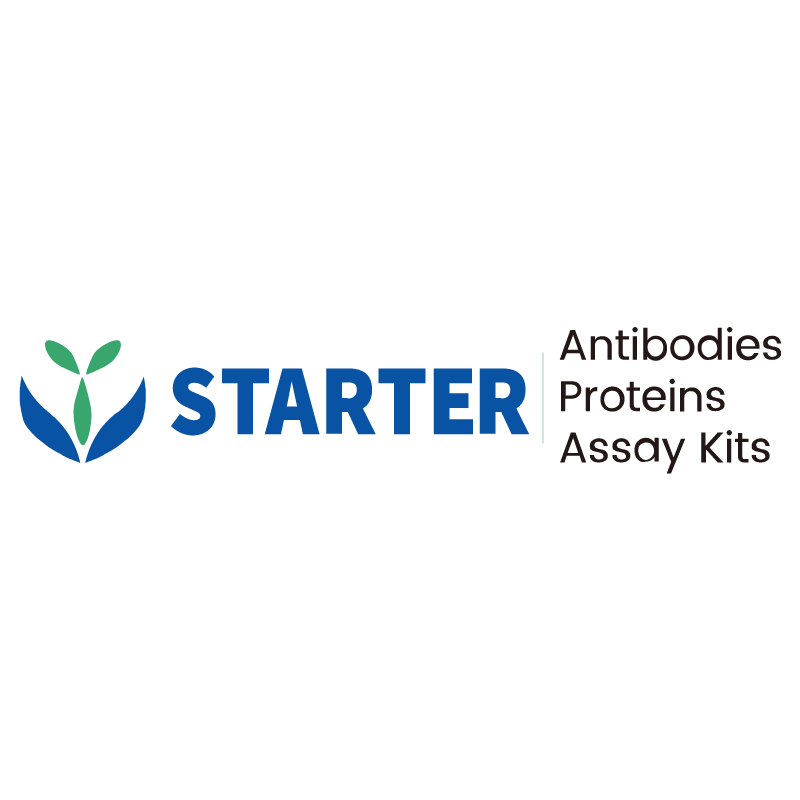WB result of Optineurin Recombinant Rabbit mAb
Primary antibody: Optineurin Recombinant Rabbit mAb at 1/1000 dilution
Lane 1: Raji whole cell lysate 20 µg
Lane 2: HeLa whole cell lysate 20 µg
Lane 3: A172 whole cell lysate 20 µg
Lane 4: HDLM-2 whole cell lysate 20 µg
Negative control: Raji whole cell lysate
Secondary antibody: Goat Anti-rabbit IgG, (H+L), HRP conjugated at 1/10000 dilution
Predicted MW: 66 kDa
Observed MW: 72 kDa
Product Details
Product Details
Product Specification
| Host | Rabbit |
| Antigen | Optineurin |
| Synonyms | E3-14.7K-interacting protein (FIP-2); Huntingtin yeast partner L; Huntingtin-interacting protein 7 (HIP-7); Huntingtin-interacting protein L; NEMO-related protein; FIP2; GLC1E; HIP7; HYPL; NRP; OPTN |
| Immunogen | Synthetic Peptide |
| Accession | Q96CV9 |
| Clone Number | S-2030-40 |
| Antibody Type | Recombinant mAb |
| Isotype | IgG |
| Application | WB, IHC-P |
| Reactivity | Hu |
| Positive Sample | HeLa, A172, HDLM-2 |
| Purification | Protein A |
| Concentration | 0.5 mg/ml |
| Conjugation | Unconjugated |
| Physical Appearance | Liquid |
| Storage Buffer | PBS, 40% Glycerol, 0.05% BSA, 0.03% Proclin 300 |
| Stability & Storage | 12 months from date of receipt / reconstitution, -20 °C as supplied |
Dilution
| application | dilution | species |
| WB | 1:1000 | Hu |
| IHC-P | 1:200 | Hu |
Background
Optineurin (OPTN) is a 67 kDa multifunctional cytosolic adaptor protein, originally identified as FIP-2 (E3-14.7K-interacting protein) and later implicated in normal-tension glaucoma, amyotrophic lateral sclerosis, Paget’s disease of bone, and Crohn’s disease. It contains several domains (e.g., leucine zipper, zinc finger, ubiquitin-binding domain, LC3-interacting region) enabling interaction with proteins such as Rab8, myosin VI, and TBK1, thus participating in vesicular trafficking, Golgi maintenance, NF-κB-mediated antiviral signaling, and autophagy (including aggrephagy, mitophagy, and xenophagy). Notably, OPTN acts as an autophagy receptor, recruiting ubiquitinated mitochondria to autophagosomes during mitophagy via its ubiquitin-binding activity, and its mutations (e.g., E50K, M98K) disrupt autophagy and lead to neurodegeneration and retinal ganglion cell death.
Picture
Picture
Western Blot
Immunohistochemistry
IHC shows positive staining in paraffin-embedded human kidney. Anti-Optineurin antibody was used at 1/200 dilution, followed by a HRP Polymer for Mouse & Rabbit IgG (ready to use). Counterstained with hematoxylin. Heat mediated antigen retrieval with Tris/EDTA buffer pH9.0 was performed before commencing with IHC staining protocol.
IHC shows positive staining in paraffin-embedded human liver. Anti-Optineurin antibody was used at 1/200 dilution, followed by a HRP Polymer for Mouse & Rabbit IgG (ready to use). Counterstained with hematoxylin. Heat mediated antigen retrieval with Tris/EDTA buffer pH9.0 was performed before commencing with IHC staining protocol.
IHC shows positive staining in paraffin-embedded human cervical squamous cell carcinoma. Anti-Optineurin antibody was used at 1/200 dilution, followed by a HRP Polymer for Mouse & Rabbit IgG (ready to use). Counterstained with hematoxylin. Heat mediated antigen retrieval with Tris/EDTA buffer pH9.0 was performed before commencing with IHC staining protocol.
IHC shows positive staining in paraffin-embedded human gastric cancer. Anti-Optineurin antibody was used at 1/200 dilution, followed by a HRP Polymer for Mouse & Rabbit IgG (ready to use). Counterstained with hematoxylin. Heat mediated antigen retrieval with Tris/EDTA buffer pH9.0 was performed before commencing with IHC staining protocol.


